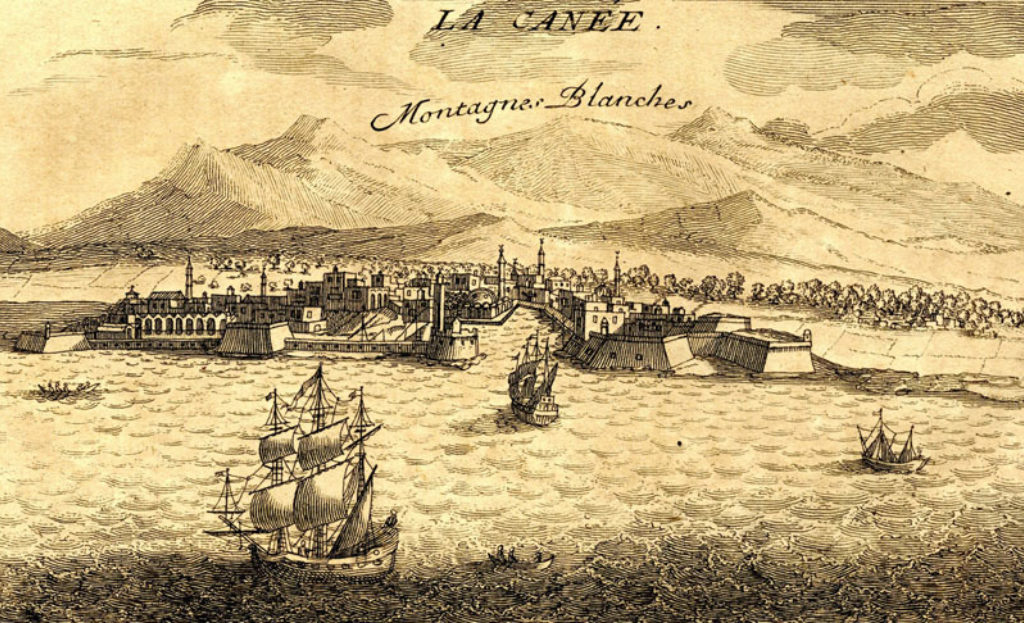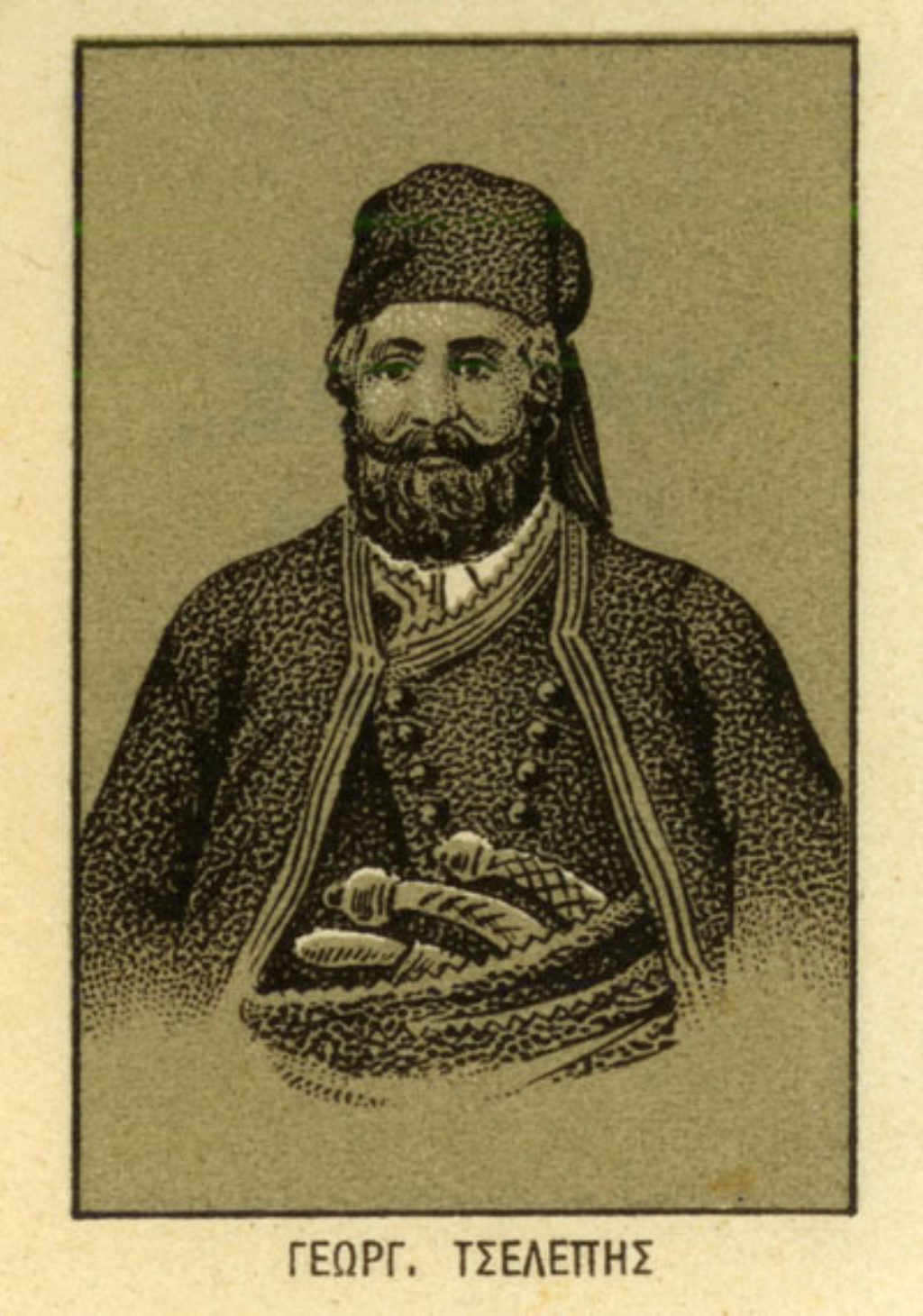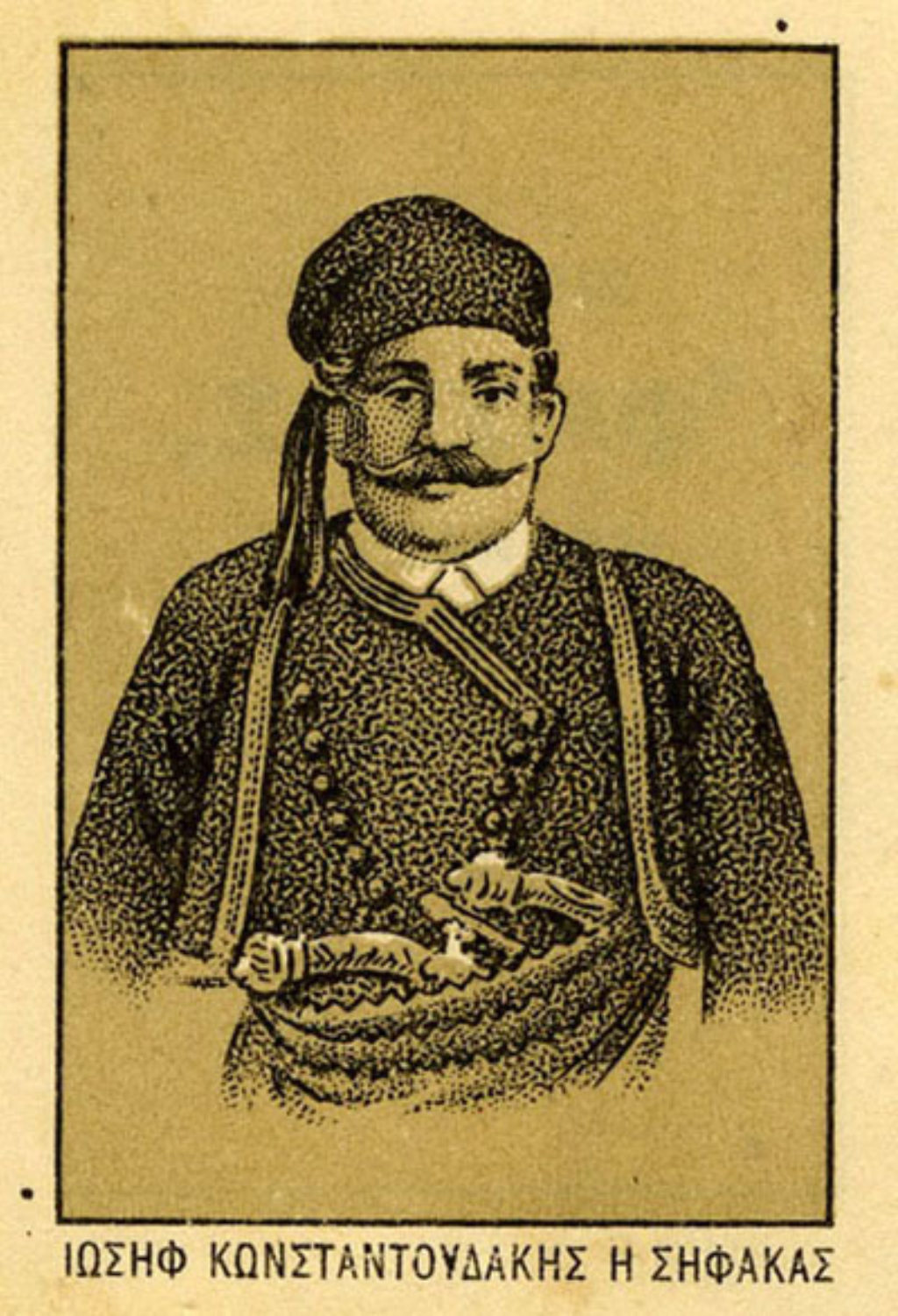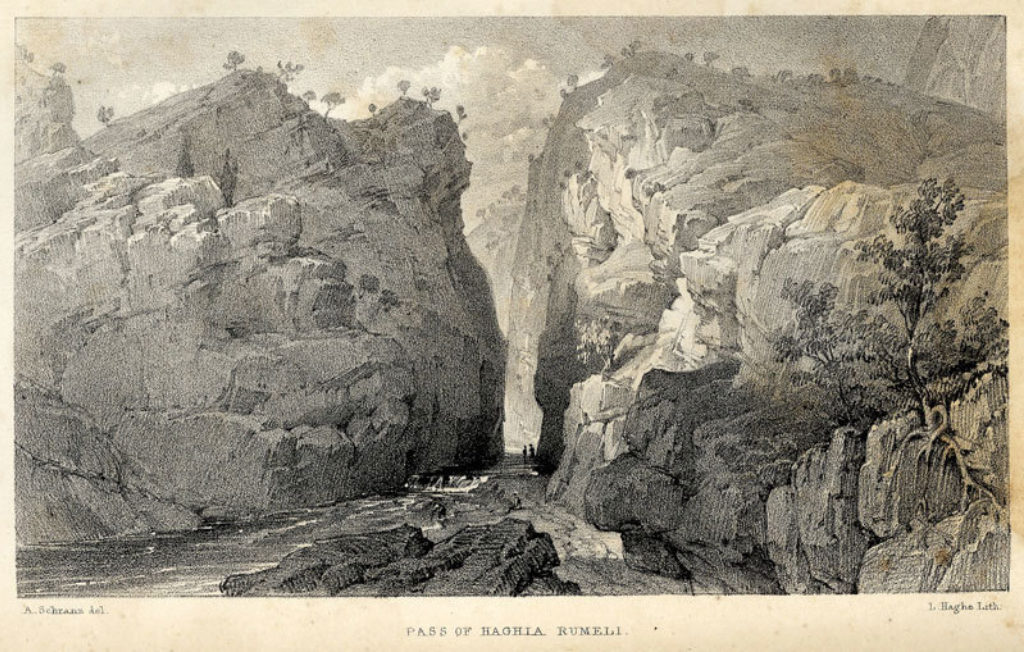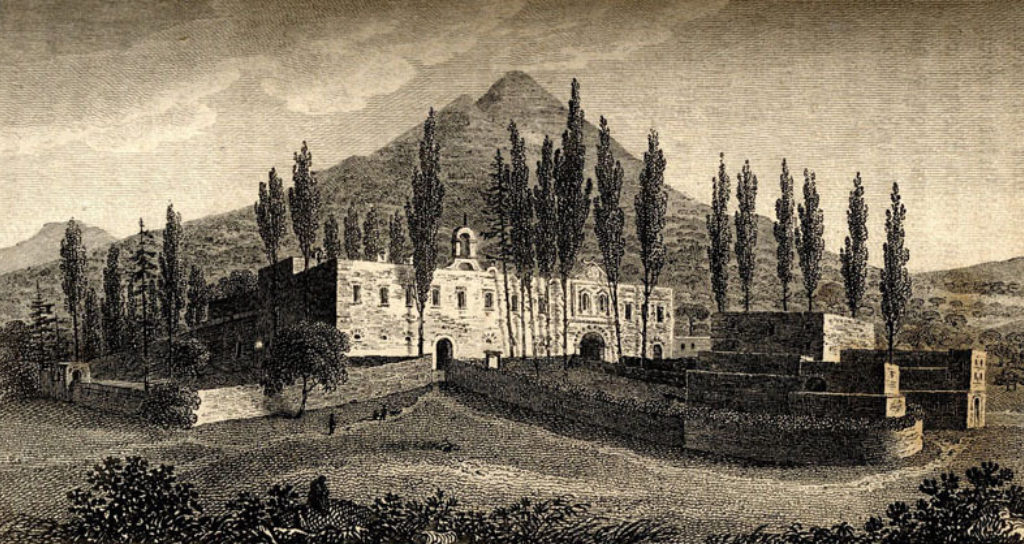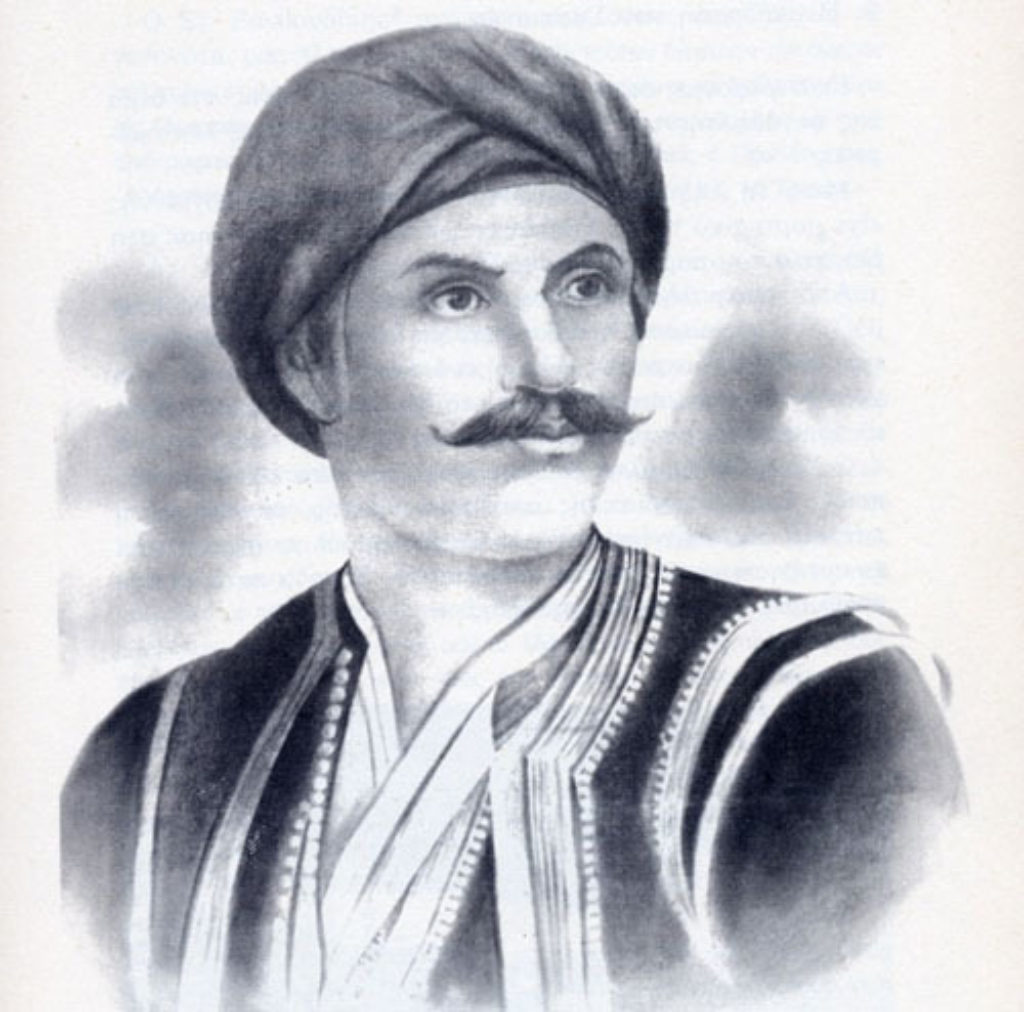THE FIRST AND SECOND PERIOD (1821-1824)
Acts of Violence
Acts of Violence
Every new piece of information confirming that the revolution was taking hold in areas outside Crete triggered new waves of violence. First in Chania and then in Rethymnon, Heraklion, Sitia and elsewhere, the Muslims unleashed their wrath in successive attacks and pillaging, both in the towns and in the countryside.
The attacks further intensified in July, following the onset of the first clashes in Kydonia. Despite attempts by the Ottoman authorities to rein in the Muslim mob, the result was that Christians were killed in their hundreds, including members of the clergy, teachers, merchants and other prominent figures. The horde even broke into Muslim homes in search of those who had taken refuge there.
The first skirmishes
The first skirmishes
In mid-June, a group under Anagnostis Panayiotakis and other rebel leaders was dispatched by the Chancelry of Sphakia to Theriso, to allay the fears of Muslims and thus buy valuable time. However, on June 14th 1821, the arrival of a band of armed Muslims from Chania was all it took to start the fighting. Having killed the subaşı (police commander) and other Muslims in Theriso, the rebels split into two groups. The first headed to the village of Lakkoi and the second to Keramia, where they joined other revolutionaries.
After the initial assaults the group of Muslims were forced to barricade themselves inside the village of Loulos. The battle lasted all day and led to several casualties, including their leader, Tambouratzis, whereupon the band fled to Chania.
The battle at Loulos and the ensuing attack on Lakkoi were the first open clashes, symbolically marking the overall start of the 1821 revolution on Crete.
Clashes in the First Period (June-August 1821)
Clashes in the First Period (June-August 1821)
Apokoronas, Kydonia, south Rethymnon and Selino were the main theatres of conflict in the summer of 1821. Forming a long front from the villages north of Theriso to Malaxa and Kalives near Suda, the revolutionaries blockaded Chania, repelling numerous forays by the Muslims.
Further east, they took the villages of Agios Ioannis Kamenos, Argyroupoli and Episkopi, all on the fringes of the Lefka Ori or White Mountains. The next step was their successful incursion into the Amari valley and clash with the Muslims of Ambadia at Vatheiako, in late June.
In July the Muslims retaliated on all fronts. Hard on the heels of their defeat at Kambia, near Theriso, troops from Heraklion and Rethymnon entered the Dafnomadares Mountains heading for Kallikratis in Sphakia. Groups led by Kaounis and then Omer Efendi were surprised and decimated on the mountain plains of Askifou and Ambelos respectively.
The First Destruction of Sphakia (August 1821)
The First Destruction of Sphakia (August 1821)
In late July 1821 yet another major Muslim campaign got underway from Candia. The revolutionaries’ united forces gathered in the area between Apokoronas and Rethymnon to cut off their advance. Nevertheless, after several clashes a cavalry unit took Armyros, opening up the road to Apokoronas and Kydonia.
Apart from a victorious battle at Aliakes near Theriso, the rebels were forced to scatter in an attempt to save their families. Exploiting the panic, the Muslims invaded Sphakia in late August 1821 without meeting any substantial resistance.
Both the Sphakians and their families and the refugees in the area fled to the surrounding mountains, Agia Roumeli and the island of Gavdos. Sphakia was destroyed, but in mid-September the Muslims were forced to leave the area for fear of fresh attacks, leaving the field open for the struggle to revive.
Clashes in the Second Period (September 1821-April 1824)
Clashes in the Second Period (September 1821-April 1824)
Despite being victorious, the Muslims were unable to effectively control the countryside. The revolutionaries soon regrouped, making small-scale raids on Muslim villages. By early October 1821 most of the areas around Chania and Rethymnon were under their control, forcing the Muslims to take refuge in the fortified towns once more.
What typified this new revolutionary period was the lasting incorporation of Crete into the framework of the wider Greek Revolution, an attempt at more organized political and military action, and expansion of the uprising to other areas on the island.
Contrary to initial expectations, successive assaults on Kissamos and Selino and a concerted operation to take Rethymnon failed. Yet in early 1822 the revolutionaries did succeed in taking Arkadi, paving the way for the expansion of their activity into Mylopotamos, Mesara and the eastern districts.
Defeat and Quashing of the Revolution
Defeat and Quashing of the Revolution
In late May 1822 the first divisions of the Egyptian army arrived at Suda. Despite meeting a spirited defence, the Muslims soon succeeded in taking the positions around Chania, and in destroying Theriso and Lakkoi not long afterwards. Aiming at some form of diversionary tactic, the revolutionaries moved their activities eastwards, forcing Hasan Pasha, the new military commander, to abandon Apokoronas. Though battles were also fought in Temenos, Pediada, Mesara and Lasithi, the attempt to consolidate the revolution in the eastern regions failed.
Scattered across the entire island and devoid of unified leadership owing to the sudden death of Hasan Pasha, in early 1824 Muslim forces were unable to prevent a fresh incursion by the revolutionaries into Kissamos, which led to the fall of the local fortress, and of Kandanos shortly thereafter. But the tables were turned by discord among the revolutionaries and the arrival of a new Muslim commander, Huseyin Bey, in June. Following defeat at Agia Varvara in August of the same year, the revolutionaries splintered apart, enabling Huseyin to quash the revolution bit by bit across the entire island. The end of the second revolutionary period was once again sealed by the renewed invasion and destruction of Sphakia in March 1824.
